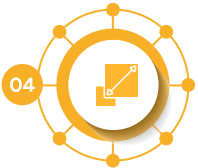

Agile, Waterfall, and the Work Between:
A Smarter Way to Manage Projects




Agile, Waterfall, and the Work Between:
A Smarter Way to Manage Projects
.png)


Agile, Waterfall, and the Work Between:
A Smarter Way to Manage Projects




Agile, Waterfall, and the Work Between:
A Smarter Way to Manage Projects

Agile, Waterfall, and the Work Between:
A Smarter Way to Manage Projects

Teams stretch their tools beyond what they were built for. They bolt on spreadsheets, patch together email threads, or juggle multiple systems just to stay afloat. Over time, that fragmentation adds up: workflows become brittle, collaboration suffers, and leadership loses visibility into what’s actually happening on the ground.
MindStaq was built to solve this. It’s the only platform that supports Waterfall, Agile, and Operational work, each in its pure form, without forcing teams into hybrid compromises or overloaded interfaces.
That means no confusing mashups of terminology. No rigid process constraints. Just clear support for the way different teams actually work, brought together in a single, unified space.
The result? Better collaboration, sharper execution, and real-time insight across every kind of workstream. From sprint planning to compliance programs to daily operations.
How to Manage Work When Projects Aren’t the Whole Picture
Work Has Changed. Most Tools Haven’t.
Every enterprise today is managing multiple kinds of work at once. Long, structured projects; fast, iterative
development; and a constant stream of operational tasks that don’t fit into any formal framework.
But here’s the catch: most project management tools still expect everyone to work the same way.
That’s where things start to break.
Most project management platforms still pick a side. Some were built for Waterfall. Others are optimized for Agile. Very few do both and fewer still handle the day-to-day operational work that never makes it onto a project plan.
The result? Organizations end up stitching together multiple tools, none of which fully reflect how work actually gets done.
When Your Tool Only Knows One Way to Work

Waterfall-Only Tools:
Great for Milestones, Useless for Momentum

But the moment your organization tries to do anything more iterative—like software development, product testing, or internal process improvement—those tools become a constraint.


So what happens?
But the moment your organization tries to do anything more iterative—like software development, product testing, or internal process improvement—those tools become a constraint.
Agile-Only Tools:
Fast and Flexible (Until You Need Structure)
Agile platforms were designed for speed. Sprints, standups, story points, and iterative delivery—they’re perfect for software development, product teams, and environments where priorities change quickly.
But outside of those teams, Agile-only tools start to feel... incomplete.
When an enterprise needs to deliver a large, structured initiative like a compliance rollout or a company-wide infrastructure upgrade, Agile tools struggle to keep up. They lack clear milestone tracking. Dependencies get messy. Long-term planning feels forced.

So, teams improvise.
They manage Waterfall work in spreadsheets, or worse, start duplicating tasks across multiple tools. Operational work gets ignored entirely because it doesn’t “fit” the sprint cycle.
The result? More fragmentation.
Data silos. Confused reporting. A PMO that can't see the full picture. And teams bouncing between platforms trying to stay on the same page.
Agile isn’t the problem. The problem is assuming it’s the answer to everything.
Hybrid Tools:
The Best of Both Worlds (But Are They?)
On paper, hybrid project management tools sound like the perfect solution: combine the structure of Waterfall with the flexibility of Agile. Everyone wins, right?
In practice, they usually create more problems than they solve.
First, there’s terminology chaos. Agile teams are forced to use Waterfall language like “phases” and “milestones.” Waterfall teams are suddenly expected to hold daily standups and log “story points.” Nobody is speaking the same language—and everyone is frustrated.
Then comes methodology dilution. Instead of supporting Agile and Waterfall properly, hybrid tools tend to water both down. You lose the speed and responsiveness of real Agile, and the structure and predictability of proper Waterfall. What’s left is a half-formed process that doesn’t quite work for anyone.
And once again, operational work gets left behind because these tools are built around the assumption that everything is a project, when in reality, most day-to-day work isn’t.
What’s supposed to bring clarity ends up adding confusion.
What’s meant to unify teams actually fragments them further.
Instead of solving the methodology problem, hybrid tools just bury it under a new layer of complexity.

Operational Work:
The Invisible Majority
While tools argue over Waterfall vs. Agile, a huge portion of real work gets ignored entirely.

Support tickets

Recurring tasks

Service requests

Ad hoc follow-ups

Compliance tracking

Internal requests
This isn’t side work, it’s the backbone of most teams’ days. And yet, few platforms offer any structured way to manage it. It’s not tracked. It’s not visible. It’s not measured. Instead, operational work gets buried in inboxes, spreadsheets, Slack threads, or simply left to memory. Operational Task Management isn’t “project work”, but it still needs to be managed. Ignoring it doesn’t make it go away. It just makes it invisible.
A Simpler Way to Work Across Different Methods
Most teams don’t work the same way. And that’s fine. Expected, even.
The problem is that most project management tools still assume they do. Some are built just for Waterfall. Others only make sense if you’re fully Agile. And the ones that try to combine both usually create more confusion than clarity.
We built MindStaq to solve that. Not by blending everything together, but by supporting each methodology on its own terms.
-
If you’re running a Waterfall project, you get phases, milestones, and long-range planning.
-
If you’re working in Agile, you get sprints, backlogs, and iterative workflows.
-
If you’re handling day-to-day operational work, you’re not forced to pretend it’s a project—you just track the work the way it naturally happens.
All of this lives in one system. No need for separate tools, no need for teams to change how they work just to fit the software.
Here’s what that looks like in practice:

AI that actually helps
-
Smart suggestions for tasks, priorities, and timelines
-
Flags blockers and helps reallocate resources when needed
-
Subtle, useful, not flashy or intrusive

Hybrid programs, not hybrid confusion.
-
Keep methodologies separate at the project level
-
Combine them at the program level, where it makes sense
-
Example: One Waterfall project, one Agile stream, and one operational workstream working toward the same goal, without getting in each other’s way

Scales across the organisation.
-
Start with one team, expand without reworking processes.
-
Each team keeps their method, but everything still fits together.
-
Great for complex programs and multi-department projects.

Clarity for leadership, without burdening teams.
-
Real-time dashboards across methodologies.
-
No need to manually “translate” Agile or Waterfall into reports.
-
Executives see what’s happening, without slowing anyone down.

All teams, One platform.
-
One space for all work—no app switching, no spreadsheet duct tape.
-
Information stays connected across teams and departments.
-
Everyone sees the same reality, even if they work differently.

Each methodology, fully supported. No compromise.
-
Waterfall projects get dedicated timelines, dependencies, and structured planning.
-
Agile teams get sprints, backlogs, epics, and velocity tracking.
-
Operational teams manage recurring work, service tasks, and unstructured to-dos.
-
No one has to learn someone else’s terminology.
That’s the whole idea of MindStaq:
Give teams what fits. Don’t ask them to bend. Keep everything in sync and visible, without making the process more complicated than the work itself.
One of our customers, a large enterprise with multiple teams and conflicting tools, came to us with a familiar problem: too many systems, and no shared picture of the work.
Here’s what they were using before:
-
Microsoft Project for Waterfall initiatives
-
ServiceNow for operational tasks
-
A third-party tool for Agile boards, used by software teams
-
Plus spreadsheets, email chains, and a lot of manual reporting in between
It worked—barely. But the cracks were obvious:
-
Data was scattered
-
Reporting was inconsistent
-
Teams were disconnected
-
And leadership couldn’t see what was happening across departments without asking for three different updates
How One Enterprise Got Its Work Back Under Control




When they switched to MindStaq, the change was immediate, because they overhauled nothing, because they didn’t have to.
Here’s what changed:
-
The project management office kept running Waterfall the way they always had—no disruption.
-
The software teams continued working in sprints, with their own Agile setup intact.
-
The operational teams finally had a place to manage non-project work without duct-taping a process together.
All of that happened on one platform.
And because everything was connected, leadership got a full, live view of:
-
What was on track
-
Where things were stuck
-
And how teams were performing—regardless of how they worked
They expanded MindStaq across more departments once they saw how much time they were saving and how much cleaner the collaboration became.
Support the Work You Actually Have
Most project management tools expect everyone to work the same way.
But the reality is: teams don’t.
And they shouldn’t have to.
Some need structure. Some need speed. Some just need a way to track everyday work without calling it a “project.” Trying to fit all of that into one methodology (or worse, a compromised hybrid) just makes things harder.
MindStaq was built for how work actually happens.

